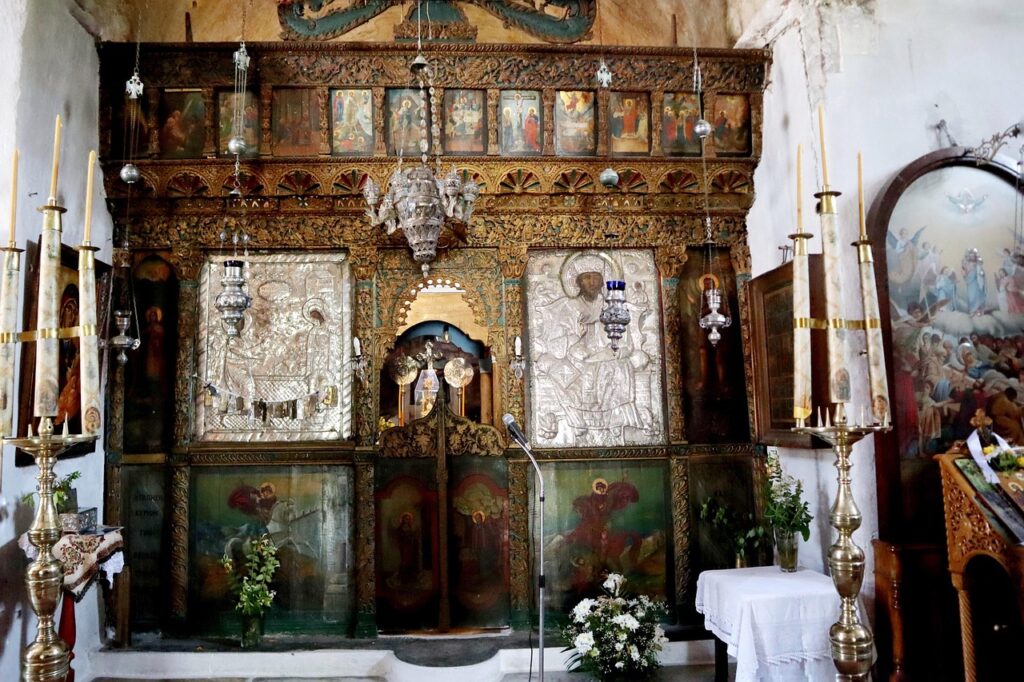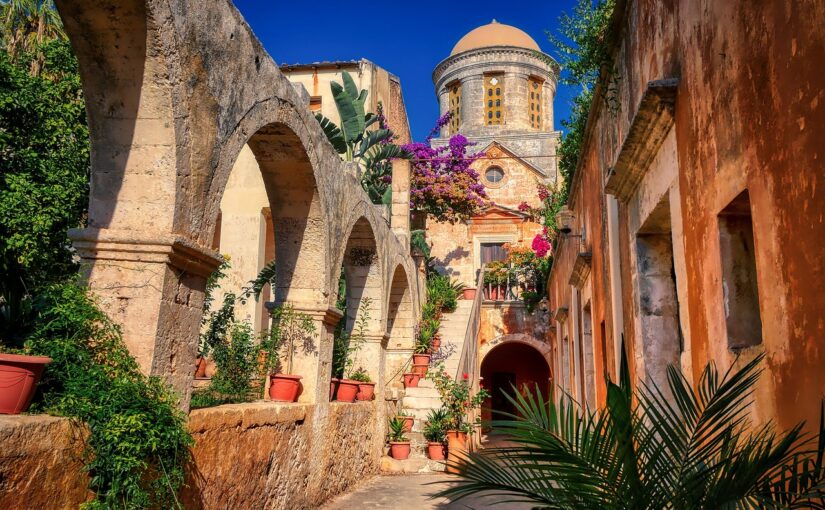September sweeps into Greece with a sense of transformation, a vibrant blend of history, tradition, and hope. For Greek Orthodox Christians, the first day of September isn’t just another stretch of the calendar. It marks the beginning of the new ecclesiastical year, a spiritual reset deeply entwined with centuries-old customs and the rhythms of rural life. Whether in bustling cities or remote villages, the air tingles with anticipation, prayer, and communal activity, drawing an unbroken thread from the past to the present.
The Ecclesiastical Calendar: Why September First?
Most Western Christian traditions commence their liturgical year with Advent, weeks before Christmas. The Orthodox Church, by contrast, turns to September. This date, rooted in ancient practices, traces back to the First Ecumenical Council of Nicaea in 325 AD, where church leaders gathered to harmonize beliefs and church order across the Christian world. In those days, September also signified the start of the civil year in many regions, including the Jewish tradition. It marked the time of harvest, the gathering of grapes, olives, and grains, and a season for communities to give thanks for the earth’s abundance.
So, September was chosen as the beginning. As fields yielded their fruits and people collected the blessings of the year, the church invited believers to reflect, pray, and step into a new spiritual cycle. Every September first, Orthodox communities across Greece come together for special liturgies, eager to renew their faith and intentions.
Ancient Customs and Harvest Traditions
September is inseparable from the Greek countryside, its vineyards, and the communal rituals of harvest. Throughout history, it has been the prime month for agricultural fairs, festivals, and bustling markets. The grape harvest, ”trygos” in Greek, gives September its popular nicknames: Trygitís or Trigominás. Another name, petimezás, celebrates a thick, nutritious grape syrup cherished especially on Crete, which is used as a natural sweetener in local dishes.
Harvest time is a communal affair. Families, friends, and neighbors join hands to pick grapes and press them into must for wine and petimezi. Even children are excused from school, invited to help with what many consider a divine gift, wine, along with water, oil, and bread, holds a special place in the heart of Greek culture. This teamwork and celebration unite communities, reminding all of the joys of shared labor and gratitude.
The first sampling of the new wine, known as the “Heurige,” is reserved for the Feast of Saint Demetrios on October 26. Meanwhile, tsípouro, a potent spirit distilled from grape skins, finds its way into glasses just a month after the grape picking concludes. Each stage of the harvest is marked by fellowship, stories, and song, echoing traditions that have shaped life on the land for generations.
Feast Days and Rituals: The Orthodox Cycle Begins
The new ecclesiastical year unlocks a series of commemorations and feasts that shape the spiritual life of believers. Early in the month falls the “Nativity of the Theotokos,” or the Birth of the Virgin Mary, celebrated on September 8. Mary’s role in Orthodox faith is essential, a symbol of nurturing and devotion who guides the faithful throughout the year.
Fourteen days after the new year, on September 14, Orthodox communities honor the “Elevation of the Holy Cross,” one of the highest feasts of the church calendar. This day, known in Greek as ýpsossi tou tímíou stavroú, is rich with symbolism and ritual. Basil leaves are distributed in churches, echoing the story of Saint Helena, mother of Emperor Constantine, who, legend holds, found the True Cross in Jerusalem amidst a blooming patch of basil. Hence, basil, or stavroloúloudo (cross flower), holds a sacred status on this day.
It is common for parishioners to bring a mixture of seeds to church for a special blessing during the Elevation of the Cross, seeking protection from storms and disease and praying for a fruitful year. Families of seafarers have particular reverence for this feast, evidenced in an old saying: “On the Elevation of the Cross, say your prayers and tie up your ship in the harbor.” For many Greek sailors, “Tou Stavrou” marks the end of their long voyages, signaling a safe return home.

The Day of the Indiction and Name Days
September first is also known as the “Day of the Indiction,” a throwback to Byzantine times when it marked the beginning of the fiscal year and a reordering of official affairs. Over centuries, the day transformed into a celebration of saints renowned for their faith and virtues. It is a time when many Greeks, those named Adamantios, Athina, Simeon, Thalia, and others, celebrate their name day, a festivity often more significant than a birthday.
Throughout the month, traditions spill into daily life. In churches and homes, prayers for renewal, blessings for crops, and gatherings anchoring families to their heritage manifest in every gesture and shared meal.
September as the Day for the Preservation of Creation
A more recent, but deeply meaningful addition to the September first observances is the “Day of the Preservation of Creation.” Initiated in 1989 by Ecumenical Patriarch Dimitrios I, this day calls Christians to reflect on their responsibility toward the environment. In churches across Greece, as well as worldwide, prayers rise for the safeguarding of the natural world and the careful stewardship of resources.
This spirit of environmental awareness has spread to other Christian denominations, including the Catholic Church, which now recognizes September first as the “World Day of Prayer for the Care of Creation.” It is a powerful reminder that faith does not stand apart from the world but is rooted in the care for all life, an ideal as urgent today as ever.
Historical Milestones: Conflict and Remembrance
September has also witnessed key turning points in Greek and Christian history. The year 312 saw Emperor Constantine’s pivotal victory over Maxentius, clearing the path for Christianity’s recognition in the Roman Empire. This triumph changed the course of history and linked September with gratitude and new beginnings for Christians.
Not every September first in Greek memory is joyous. On this day in 1821, the island of Samothraki suffered a brutal massacre during the Greek War of Independence. The population, having risen up against Ottoman rule, faced devastating retribution, many were killed or enslaved. The event remained largely in shadow until 1980, when the Academy of Athens formally recognized Samothraki’s sacrifice in the nation’s fight for freedom. On the island, September first is marked with solemn remembrance, honoring resilience in the face of tragedy.

September’s Place in Greek Life: Transition and Renewal
Beyond the church walls and sacred traditions, the first of September signals a profound transition in Greek society. It is when the heat of summer gives way to cooler days and when students prepare to return to school. For many, the month carries the promise of a fresh start, a time to set new intentions and greet life with hope.
In Orthodox parishes, the liturgies on September first provide a space for reflection: to consider what has passed and to set a steady course for the year ahead. The harmonious blend of church tradition and daily life is a hallmark of Greek culture; faith is lived, not simply observed, weaving its way through the laughter at the harvest, the quiet of early morning prayers, and the feasts inviting all to the table.
A Spiritual New Year for All
Though not an official public holiday in Greece, the first of September glows with special significance. It brings together the old and the new, anchoring present-day Greeks to the rituals and history of their ancestors. Each prayer, each grape picked, each bell that rings out in the Mediterranean air, is a celebration of resilience, gratitude, and an enduring quest for renewal.
As September dawns, the spirit of the new ecclesiastical year offers a gentle invitation: to pause, to give thanks, and to imagine the year ahead filled with shared purpose and possibility. The traditions, stories, and faith guiding this day stand as a living testament to the enduring heart of Greece, a land where every September welcomes the soul’s homecoming.
Building upon these traditions, the first of September in Greece is marked by unique ecclesiastical celebrations and sacred rites that underscore its spiritual significance. On this day, Orthodox churches across the country, and indeed throughout the Orthodox world, hold a special Divine Liturgy to inaugurate the new ecclesiastical year. At the Ecumenical Patriarchate in Istanbul, this custom reaches its most solemn form, where the Patriarch and the Holy Synod gather for liturgy, veneration of icons, and the signing of the ancient Synodal Tome for the Indiction. This ceremony, rich in centuries-old ritual, affirms the community’s prayerful hopes for the year ahead. The service features distinctive scriptural readings and hymns, including the Gospel passage of Luke 4:16-22, symbolizing the beginning of Christ’s public ministry and aligning it with the theme of renewal.
Throughout Greek towns and villages, congregations bring seeds or sprigs of basil to be blessed during liturgy, interweaving thankfulness for creation with hopes for a fruitful year. Some regions share blessed apples among families as tokens of health and good fortune. These church events often extend into festive community gatherings or meals, while the whole month shines with additional major feasts such as the Nativity of the Virgin Mary on September 8. The ecclesiastical new year, then, is not merely observed but actively lived, uniting sacred ritual with the warmth of communal tradition.
For further details, the Greek Orthodox Archdiocese of America provides an authoritative liturgical calendar and explanations of the feasts at www.goarch.org/chapel/calendar, while an overview of worldwide Orthodox celebrations can be found at the official Ecumenical Patriarchate site www.patriarchate.org and the Orthodox Church in America site www.oca.org/saints/all-lives/1985/09/01.
Image: Monastery, Crete, by Albrecht Fietz.
